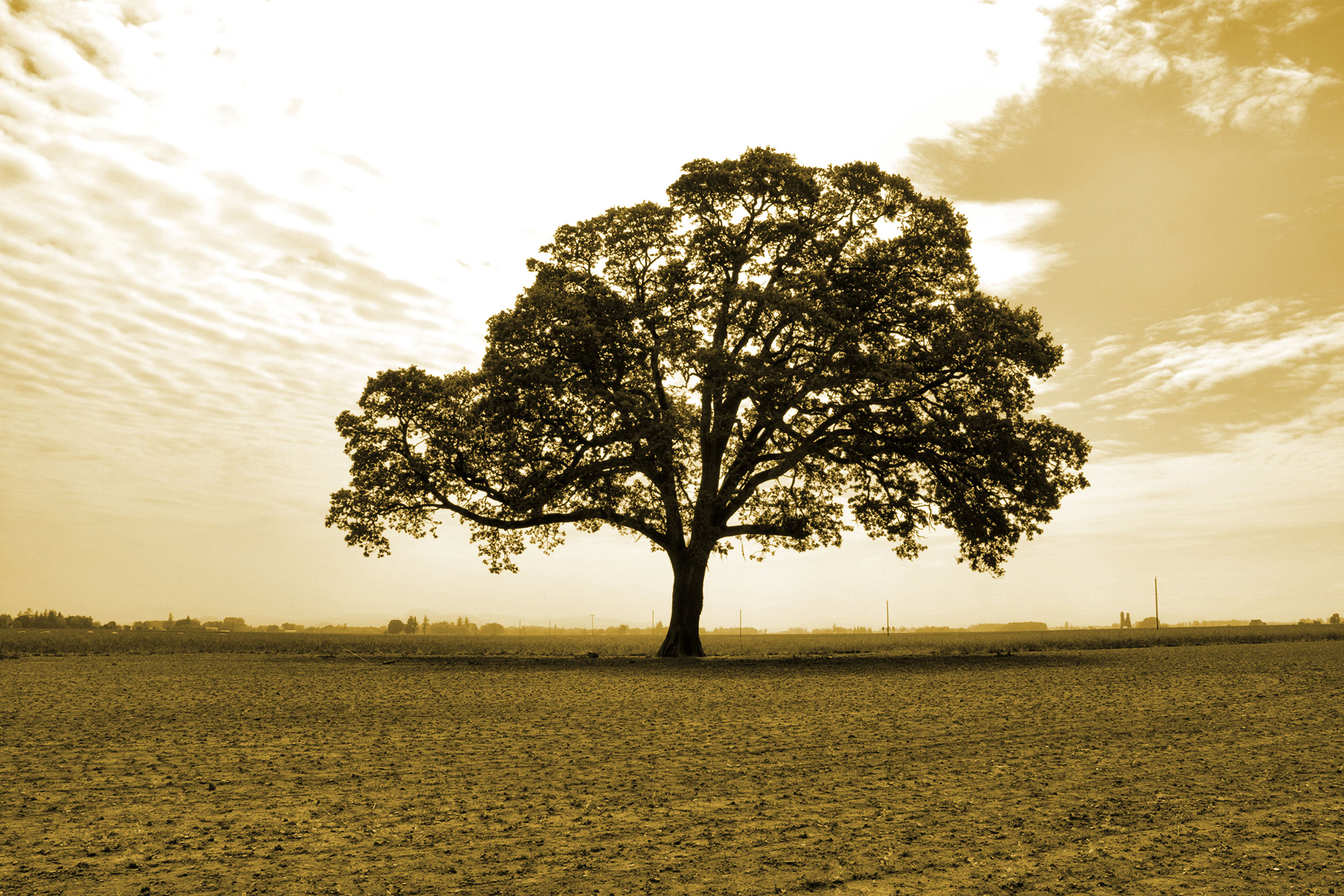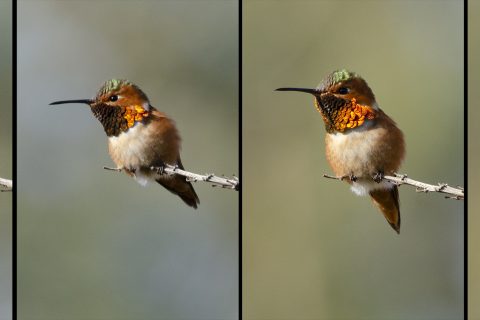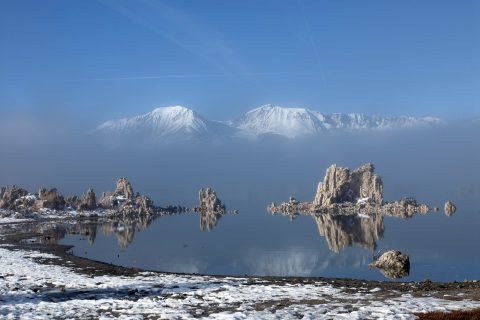When photographers begin talking about composition technique, one of the first things that comes up is the rule of thirds. It has long been a standard in photographic composition. Using this simple, wonderful tool can help photographers create spectacular images. It can also make them miss the point—what is most interesting in the photo. But since it is the traditional starting point for the composition conversation let’s start there and look at what the rule of thirds is, the different ways it can be used, and when it should be ditched altogether.
The photo below, taken in the Mormon Rocks in the Cajon Pass of Southern California when a storm was departing at sunset, is a good example of this technique. As you can see, a grid keeps showing up in the photo. These are the “thirds” in the rule of thirds—sort of an imaginary tic-tac-toe board overlaid on what the photographer is seeing through the viewfinder, with two vertical lines and two horizontal lines creating nine equal sections on the photograph, and four places where the grid lines intersect.
The concept of the rule of thirds goes like this: You want to get the most interesting elements of the photo near the four areas where the grid lines intersect. In this photograph, my intention was to draw the viewer’s eye to the tops of the brightly lit uplifted rocks and then out into the angry, dark clouds beyond. As you can see, the tops of those two rocks are right in the area of both of the top grid-line intersections. In addition, I wanted to draw their eyes up there there by using the tracks in the foreground. You can see that where those tracks begin their turn toward the peaks is where my two grid-line intersections at the bottom are. The “motion” of the tracks starts at the left foreground and moves toward the right background, and the “motion” of the rocks also starts at the left foreground and moves toward the right background.
In this case, the rule of thirds helped me find the perfect spot to stop and wait for the moment that the setting sun was blazing on the rocks with the dark clouds in the background.
The rule of thirds is not just for scenic photography. It can also work in shots with people, as in the photograph below of these happy, wet little girls just back from a swim, enjoying a Memorial Day watermelon-eating contest on the shore of Lake Gregory in Crestline, California. I was standing on the top of an adjacent table watching the spectacle and noticed that while the girl on the left middle seemed very intent on winning, the one on her left (your right) was just savoring the moments. I moved back to the far corner of the table so that the row of girls was diagonal to the frame going from bottom left to top right, the way the eye naturally moves, and I focused on the girl who was enjoying the contest the most.
As you can see when the grid appears over the photo, the competitive little girl on the left is in the area of my left bottom grid line intersection, while the girl with the happy, shining face is near the right top grid-line intersection, and is the main subject who captures the eye. Both are the most interesting elements of the photo, but the smiling face ranks a little higher.
Now, sometimes you have to break the rules in photo composition. The following, deliberately grainy black-and-white photo, which I took on a rainy day in Paris from the Notre Dame Cathedral, is an example.
With this image, I wanted to create the impression that this gargoyle was keeping watch over the city, ready to swoop off of the heights of the cathedral at a moment's notice. So, I placed this guy off to the side of the frame to show the sweeping, dreary view of Paris, over which he was keeping guard. The old rule of thirds was no use to me in this instance.
The following is another shot that breaks the rule of thirds. Driving up through the farming areas of the Willamette Valley of Oregon, from far away I saw one the most imposing oak trees I have ever seen, both in terms of size and prominence—it was more than 100 feet tall and surrounded by flat farmland. I put it pretty much in the middle of the photo, where I believe it belongs. I also turned it into a duotone for good measure.
Again, not knocking the old standard, because it is often useful, but as in all forms of art, sometimes you have to break the rules to get what you're shooting for.
All images © Lee Reeder.

Lee Reeder is a ghostwriter, writer, editorial project manager, photographer and graphic designer with decades of experience. He has also served as a non-profit and for-profit leader and manager.
Like this post? Please share it with your colleagues & friends or visit me on social media.








